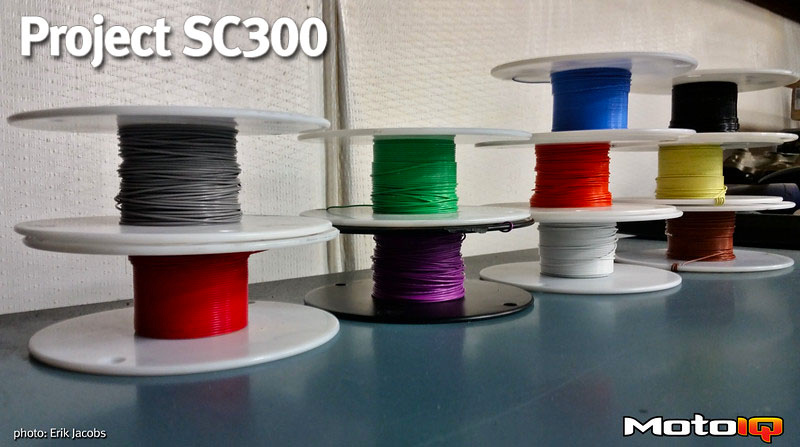,
 The completed trunk power distribution harness.
The completed trunk power distribution harness.Oh. Em. Gee. We finally completed something on this car! The completed trunk power distribution harness looks downright sexy. It will hopefully last us a long time and be reliable. With that, we can move onto the wheel speed sensor harness.
 This is the wheel speed sensor harness diagram, for reference.
This is the wheel speed sensor harness diagram, for reference.The Z30 SC300 was produced from 1991 until 2000. At least in the early years, the car employed a pretty common ABS setup. The ABS solenoid featured three output channels, with one for each front wheel and a shared output channel for the rear wheels. In other words, the ABS computer could individually control the LF and RF wheels. But, if it wanted to control the rear, it could only actuate both brakes at once.
In contrast to being a three-channel system, the car did feature individual wheel speed sensors to detect lockup and other conditions. Cars of this era mostly employed passive variable reluctor sensors. Essentially, there are “teeth” on a ring that pass by the sensor, and in a gross oversimplification, this creates voltage “pulses”. These pulses, and the change in speed/frequency of them, is what the ABS computer looks at in order to figure out what to do. Modern cars employ active sensors that are not only powered but can also determine wheel direction in addition to just speed, with four-channel ABS solenoids that can apply the brakes not only for anti-lock purposes but also for traction control and torque vectoring.
Why are we going through the trouble of measuring the wheel speed? Well, for one, that tells us how fast the car is going. Sure, the GPS would know that, too, but more data isn’t bad. Second, individual wheel speed can tell us what we are doing on track. In the short-medium term, we are eliminating the ABS. Knowing that we might be locking up individual wheels, or slipping wheels (under power) can help us adjust our driving in certain corners. Knowing we are getting airborne in some places might help us adjust our line, too (eg: get off that curb). The Haltech offers traction control capabilities based on wheel speed input. We might later add a motorsport-grade ABS system. Who knows!
Anyway, the wheel speed sensor harness is pretty simple. One bundle to the front- into the engine bay, and one bundle to the back- into the trunk. We are going to now assemble the trunk portion of the wheel speed sensor harness.
 Shielded wire is important when dealing with sensitive signal-carrying circuits.
Shielded wire is important when dealing with sensitive signal-carrying circuits.The trunk harness is mostly all power circuits or insensitive signals. The fuel level signal is being damped by the sensor itself and the Haltech conditioner and is not a “critical” signal. Yes, it’s important to know when you’re out of fuel, but a slight variation in the reading is not a big deal. Wheel speed, in stark contrast, is a critical signal. Small variations due to noise could be disastrous, especially if it results in ABS or traction control doing something unnecessary.
This is where shielded cabling comes in. The shielding does just what it sounds like it does- it shields the wires inside from noise/interference from outside. We are using 20AWG 3-conductor shielded cable (M27500-20SB3T23 from MilSpecWiring). This cable features not only a nice shield around the three conductors inside, but it also incorporates twists into the wires. The twisting of the wire inside the shield also helps to reduce noise. And, it’s built to milspec standards, which means it is fluid and fire resistance and other great properties.
Since the wheel speed sensors are two wires, we can describe one of them as being “ground” and the other as “signal”. This is not entirely accurate, but it serves for our purposes. The cable we are using has a different color on each conductor inside. One (blue stripe) will go to one wheel. The other (orange stripe) will go to the other wheel. The third (pure white) will be used as a common ground for both sensors.
Here, you can see that we have stripped the shielding and insulation back and have cut the blue-striped wire away in preparation for inserting this “leg” into the circular connector.
 Our first circular milspec connector.
Our first circular milspec connector.This bad boy is TINY! But, we only needed three little 20AWG wires to go through it, so it makes sense. Why did we bother separating the wheel speed sensor harness from the main power distribution harness? Well, why not, really? We had the space, and isolating this critical circuit helps potentially reduce electrical noise.



